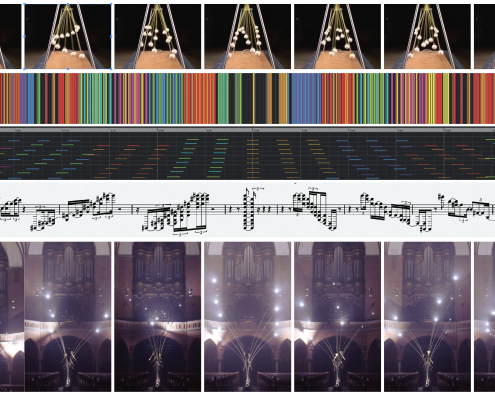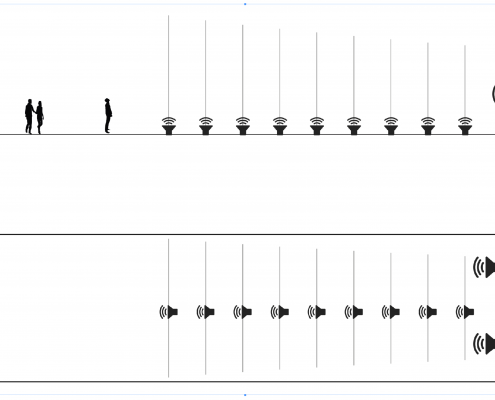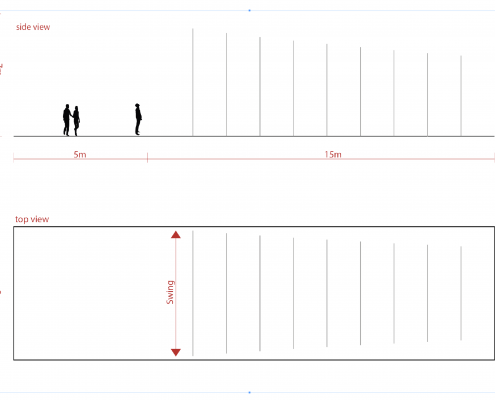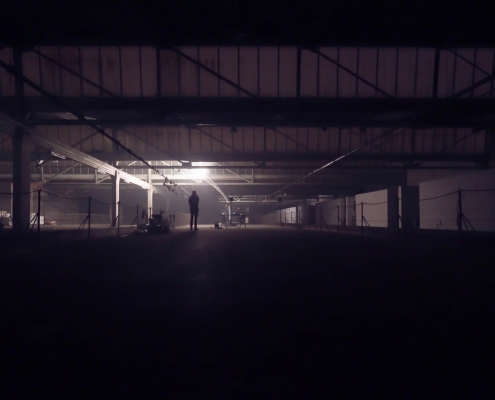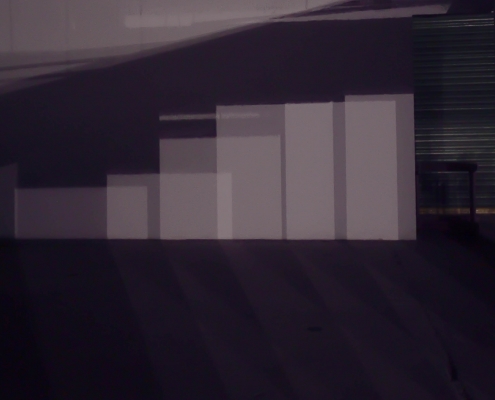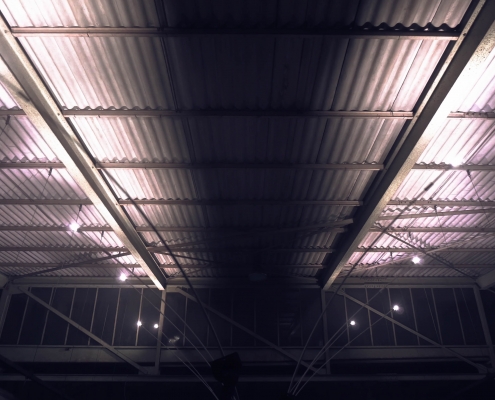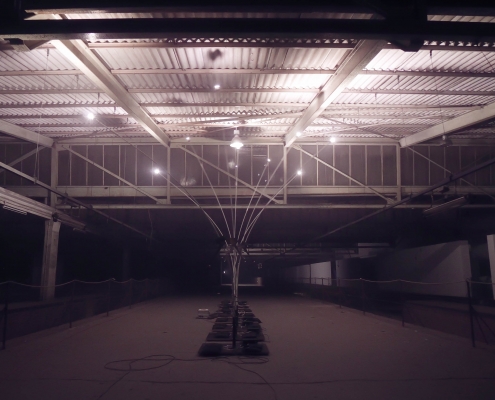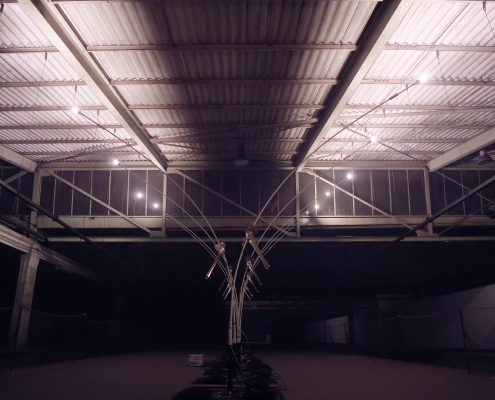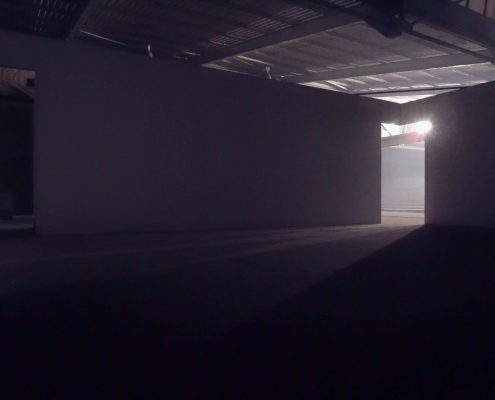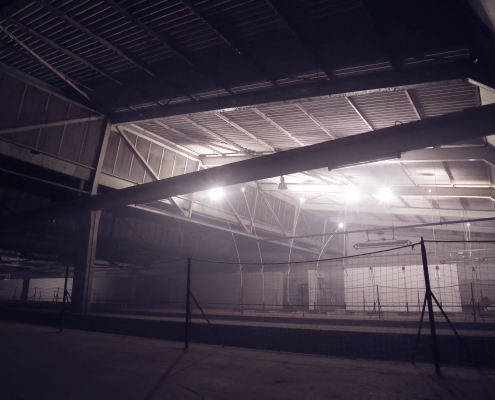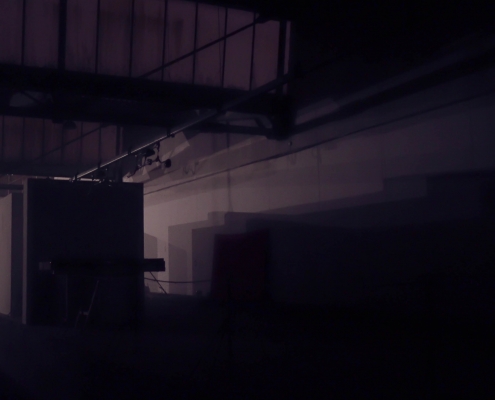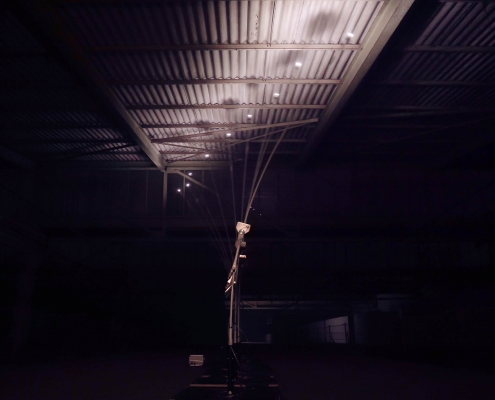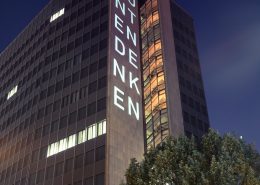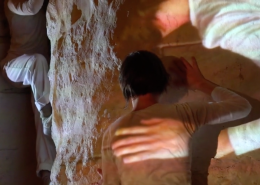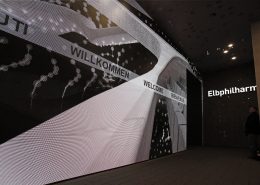Diese Version von Windlicht ist eine Adaption der im November ur-aufgeführten Installation , aufgebaut im stillgelegten Güterbahnhof in Bremen. Bei dieser Installation wurde der Klang über ein 9.3 multi-channel Audiosystem eingespielt. Neun Lautsprecher sind am Fuß der Stäbe platziert und erweitern die Arbeit um ein Raumklang Erlebnis. Die Komposition ist neu interpretiert und wurde auf zeitgenössische elektronische Klänge ausgerichtet.
Vom Mikrokosmus in den Makrokosmus. Es scheint wesentliche mathematische Zusammenhänge zu geben die unser ästhetisches Empfinden als auch unsere Wahrnehmung der Welt an sich maßgeblich prägen. Windlicht enthält ein schlichtes mathematisches Prinzip, welches sich aber in der Entfaltung auf ein System, als äußerst komplex und reichhaltig erweist. Vorerst werden nur die augenscheinlichen Muster der großen und halben Runden erkannt. Mit geschultem Auge werden weitere Zyklen und Pattern entdeckt. Das Auge versinkt im Fluss der Installation bis der Griff nach bleibender Ordnung sich löst und alles als fließende Choreographie erscheint.
Die Installation besteht aus neun raumgreifenden Lichtpendel unterschiedlicher Länge, die mittels computergesteuerter Servomotoren in gleichförmige Schwingung versetzt werden. Die unterschiedliche Länge der Pendel, führt zu einer gleichförmigen Phasenverschiebung zwischen den Pendeln. Im Verlauf lassen sich im schwingenden System immer wieder Strukturen und Muster erkennen, die sogleich wieder die Ordnung überwinden. Ein zyklischer Tanz zwischen Chaos und Ordnung entsteht.
Die mathematisch-zeitliche Struktur der Lichtpendel bildet die Grundstruktur der musikalischen Komposition. Der Hamburger Komponist Christopher Bender hat auf den 9-fach Polyrhythmus der Lichtpendel eine Musik komponiert, welche die Schwingungen der Installation zeitlich genau abbildet. In der Uraufführung der Installation in der ST. Johannis Hamburg wurde die Musik von der Kirchenorgel wiedergegeben, die durch jüngste Restauration auch elektronisch ansteuerbar ist. Bei Aufführung an anderen Orten wird die Musik durch ein multi-Channel Audiosystem eingespielt und die Komposition durch zeitgenössische elektronische Klangerzeugung interpretiert.
Team
Thorsten Bauer: Konzept, Künstlerische Leitung, Umsetzung
Christopher Bender: Komposition (Organist an St. Johannis)
Baden Coleman: Umsetzung
Janis Müller: Sound Design
Supported by:
www.stageled.com
www.nordlite.de
This version of Windlicht is an adaptation of the installation, which premiered in November, set up in the disused Güterbahnhof in Bremen. In this version the sound is displayed via a 9.3 multi-channel audio system. 9 loudspeakers are placed at the foot of the bars and extend the installation with a surround sound experience. The composition is redesigned to minimalist electronic sounds. Thus, it is a more contemporary interpretation of the installation wich fits seamlessly into the industrial environment.
From microcosm into macrocosm. There seem to be essential mathematical correlations that significantly shape our aesthetic perception as well as our perception of the world itself. Windlicht contains a simple mathematical principle, which, however, when unfolded into a system, proves to be extremely complex and rich.At a first glance only the apparent patterns of the large and half rounds are recognized. With a trained eye, further cycles and patterns are discovered. The eye sinks into the flow of the installation until the grip on lasting order is released and everything appears as flowing choreography
The mathematical-temporal structure of the light pendulums forms the basic structure of the musical composition. The Hamburg composer Christopher Bender has composed music to the 9-fold polyrhythm of the light pendulums, which exactly reproduces the oscillations of the installation. In the world premiere of the installation at the ST. Johannis Hamburg, the music was played by the church organ, which can also be controlled electronically thanks to recent restoration work. For performances at other locations, the music is played by a multi-channel audio system and the composition is interpreted by contemporary electronic sound generation.
The installation consists of nine space-consuming light pendulums of different lengths, which are set into oscillation by computer-controlled servo motors. The different length of the pendulums leads to a liniar phase shift between the pendulums. In the course of the oscillating system, structures and patterns can be recognized, which immediately overcome order again. A cyclical dance between chaos and order is created.
Team
Thorsten Bauer: Concept, Creative Direction, Realisation
Christopher Bender: Comosition (Organist an St. Johannis)
Baden Coleman: Realisation
Janis Müller: Sound Design
Supported by:
www.stageled.com
www.nordlite.de

